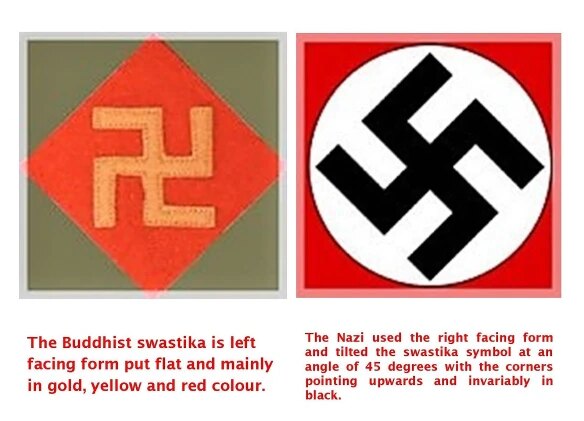BTS RM’s Military Uniform’s Swastika Explained

Recently, a new photo of BTS‘s RM, who is currently fulfilling his mandatory military service, surfaced. He appeared in his military uniform with an additional badge that triggered reactions.
New Year with Namjoon 🥺🎉 pic.twitter.com/BRRfzPWYGj
— POP NOW (@popnows) January 1, 2025
Netizens noticed that a swastika appeared in the center of RM’s badge. So, they claimed it was the Nazi symbol, although that swastika is tilted.


Fans jumped to RM’s defense, explaining that his specific badge was of military officers who performed religious duties within their units (for example, chaplains within units who provide spiritual counsel and guidance to fellow soldiers). RM’s badge is specifically representative of Buddhism, as the swastika was a Buddhist symbol before the Nazis ever appropriated it. It’s used as a symbol of Buddhism, like the cross is representative of Christianity.
translation:
The badge Namjoon is wearing is that of military officers (군종병) who perform religious duties within their units. the specific badge Namjoon is wearing is for Buddhism. pic.twitter.com/muTGTEEUmF
— ❀ ✿ (@wintertaeta2) September 17, 2024
In Korean, this symbol (卍) has cultural and religious significance, particularly in Buddhism, where it represents auspiciousness, eternity, and the Buddha's teachings. It is not associated with the Nazi symbol, which is rotated and has a completely different meaning. pic.twitter.com/JTZ2mpBQ0u
— cié დ (@Iivserene) January 1, 2025
In Korean, the symbol (卍) has cultural and religious significance, where it can represent “universal harmony, prosperity, good luck, abundance, dharma, fertility, long life, and eternity.” So, it’s not associated with the Nazi symbol, which has a totally different meaning.
In the Buddhist tradition, the swastika symbolizes the feet, or the footprints, of the Buddha. It is often placed at the beginning and end of inscriptions, and modern Tibetan Buddhists use it as a clothing decoration. With the spread of Buddhism, the swastika passed into the iconography of China and Japan, where it has been used to denote plurality, abundance, prosperity, and long life.
— Britannica
Information is power, haters. pic.twitter.com/7l1WkY4pXS
— Hashimoto ⟭⟬ ⁷ (@hashimoto1279) January 2, 2025
For… reasons, I thought I'd share two photos I took at the Samgwangsa Temple in Busan. It really is beautiful! We were there around Buddha's birthday, so the grounds were decorated with 1000s of lanterns with Buddhist symbols.
Knowledge saves you from embarrassment. You know? pic.twitter.com/tR60AHzIqU
— Cypher⁷ / Shesawseesaw (@cypherluscious) January 1, 2025
Cultural context is important.